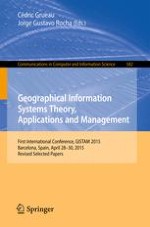2016 | Buch
Geographical Information Systems Theory, Applications and Management
First International Conference, GISTAM 2015, Barcelona, Spain, April 28-30, 2015, Revised Selected Papers
herausgegeben von: Cédric Grueau, Jorge Gustavo Rocha
Verlag: Springer International Publishing
Buchreihe : Communications in Computer and Information Science
